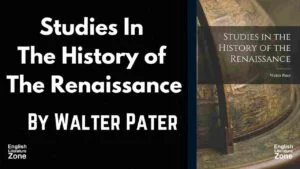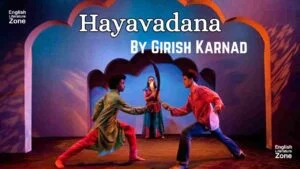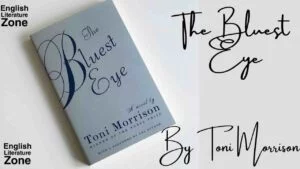Top Girls By Caryl Churchill | Top Girls Analysis

Introduction
“Top Girls” is a significant play written by Cary Churchill. The play established Churchill as one of the late 20th century. The playwrights of the late 20th century. The play approaches some of the famous women in history the role of women in history and the role of women in history and the role of women in contemporary society. The play approaches history and the role of women in contemporary society. The play is set in Britain in the early 1980s. It was first performed in 1982 at the Royal Court Theatre in London. It is a play with an all-women cast. Men though present in the stories are absent on the stage.
The story is told through the characters of five women of different join Marlene, who is the Chief Executive of Top Girl’s Employment Agency in London at a dinner party.
About Caryl Churchill
Caryl Churchill is one of the most significant and prolific British playwrights of the postmodern Era. She has written over thirty plays along with several translations and adaptations. Her work has been celebrated not only in the UK but internationally as well. ‘Downstairs’ her first play was written while she was at university. Some of her other notable plays include – ‘Cloud Nine’, ‘Serious Money’, ‘A Number’, ‘Top Girls’, ‘Blue Heart’, and ‘Far Away’. She also won a lot of literary awards for her works.
Analysis Of The Play ‘Top Girls’
The play opens in a restaurant where Marlene is hosting a dinner party for five friends. She has recently been promoted at work. The five guests are all women who are either long-dead or are fictional characters from Literature or paintings.
The first to come are ‘Isabella Bird’ and ‘Lady Nijo’. Nijo and Isabella discuss their lives, including their families. ‘Dull Gret’ and ‘Pope John’, who was elected to the papacy in the ninth century, appear. The conversation wanders between subjects, including religion and the love lives of Nijo and Isabella. Isabella goes on about her travel experiences. John talks about dressing and living as a male from the age of twelve so that she could further her education. Marlene proposes a toast to her guests. They, in turn, insist on toasting Marlene and her success.
John related her disturbing story. While she enjoyed being the pope, she also had a discreet affair with a chamberlain and became pregnant. She gave birth to her child during a papal procession. John was stoned to death and her child, she believes was also killed. While John relates her story, Nijo talks about her four children being born and talks about how she never had children. Marlene wonders why they are all so miserable.
The final guest arrives. She is Patient Griselda, a character in Geoffrey Chaucer’s ‘The Canterbury Tales’. Griselda tells her story. Though she was a peasant girl, she was asked to be the wife of a local prince, but only if obeyed him without question. Griselda agreed, She is losing the two children she bore him, they were taken from her as infants. Then Griselda was sent back to her father.
Marlene is upset by Griselda’s tale. Nija is also perturbed because her children were never returned to her. Gret finally speaks up about her journey through hell, and how she beat the devils. The scene ends with Isabella talking about the last trip she took.
The following Monday, Marlene is interviewing Jeanine for possible placement. Marlene tells Jeannie that if she is to be sent on a job with prospects, she must not tell them that she is getting married or might have children. Marlene evaluates Jeanine and suggests a job based on her perception of Jeanine’s future.
The action moves to the backyard of Marlene’s elder sister Joyce, Joyce’s sixteen-year-old daughter Angie and her twelve-year-old friend Kit are playing. Angie says she wants to kill her mother. Joyce comes out and calls, once again for the girls to come inside. Angie goes inside and comes back in just a moment later in a fancy dress which is too small for her. Angie reveals that she had put the dress on to kill her mother. She tells Kit she is going to London to see her aunt. Angie believes that Marlene is really her mother.
In the next scene, The Top Girls employment agency workers Nell and Win spend their time gossiping before starting work. They discuss their client’s profiles and their personal lives. They also gossip about their boss Howard, who is angry that Marlene has been promoted over him. Marlene receives a phone call from Joyce, who tells her that Angie has run away from home to visit her in London.
Marlene is surprised by Angie’s presence and asks if Angie is just visiting for the day, but Angie reveals that she has come to London to stay with Marlen indefinitely. Marlene tells Angie she has to go take care of some business, and leaves Angie alone in her office Nell interviews a young woman named Shona, it becomes clear over the course of the interview that Shona has lied about everything on her resume. Win and Angie get to talking – Angie asks for a job at Top Girls. Marlene returns to find Angie asleep.
Joyce also meets her sister Angie in their home in rural Suffolk. Then we learn that Marlene has a dark secret. She is actually Angie’s biological mother but she gave up her daughter to Joyce when she was born, so she pursued her career without any obstacles. Joyce resents Marlene for abandoning her family. Angie idolizes Marlene and wants to escape from her dull and unhappy life with Joyce. The play ends with a confrontation between Marlene and Joyce, in which they argue about their conflicting values and choices.
Conclusion
Thus, “Top Girls” is a play that challenges and questions the conventional notions of success and happiness for women in modern society. It asks whether women can have it all, career, family, freedom or whether they have to compromise or sacrifice something along the way. It also examines how women relate to each other across different historical and cultural contexts, and whether they can support or empower each other despite their differences.
Related Tags: Top Girls Summary, Top Girls by Caryl Churchill, Top Girls PDF, Top Girls Summary and Analysis, Top Girls Analysis, Top Girls by Caryl Churchill pdf, Top Girls by Caryl Churchill Summary, Top Girls by Caryl Churchill Analysis
- Mechanical Reproduction By Walter Benjamin | The Work of Art in the Age of Mechanical Reproduction
- The Interpretation of Dreams By Sigmund Freud
- Victorian Period | Victorian Literature and Culture
- Dear Life by Alice Munro Summary, Themes, & Analysis
- The Lotos-eaters by Alfred Lord Tennyson
- Studies in the History of the Renaissance
- The Prologue to The Canterbury Tales By Geoffrey Chaucer
- Hayavadana By Girish Karnad | Hayavadana Themes & Analysis
- The Bluest Eye By Toni Morrison | The Bluest Eye Summary
- Top Girls By Caryl Churchill | Top Girls Analysis
Are you struggling to keep up with your English Literature Coursework? Do you need detailed, customized English Literature Notes to help you better understand the texts you’re studying? “Look no further! Our customized paid notes will help you achieve your study goals quickly.
Top Girls By Caryl Churchill | Top Girls Analysis Read More »














